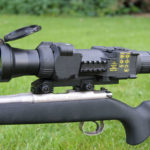The whitetail deer is one of the most mysterious and majestic animals on the North American continent. Known for being cautious and elusive, most whitetail deer are spotted traveling to and from their bedding areas in the early morning hours and late evening just before sunset.
But what about the rest of the time when deer are typically bedded down? Odds are you’ve never been able to sneak up on a snoozing deer because their senses are always on high alert—even when they are sleeping.
So, where do deer sleep?
Whitetail deer are very active in the nighttime hours and will usually feed throughout the night and opt to bed down once the sun peeks over the horizon and the rest of nature comes to life. Knowing more about how, when and where whitetail deer sleep will help you be a much more proficient hunter that’s savvy to the ways of the whitetail.
Deer typically sleep where they feel the most secure. Bucks usually bed down alone while does prefer to sleep in groups. According to biologists, a deer’s version of sleep is vastly different from our own.
Sleep for deer can be better described as dozing or napping. Scientists who have observed deer have found that they usually sleep for only a few minutes at a time before surveying their surroundings to make sure predators aren’t closing in on them.
A deer’s senses are keenly aware of everything around them at all times and it’s not uncommon for the slightest noise to wake a deer from its slumber and send it bounding off into the night. Does seem to find safety in numbers as they are often known to bed down in groups of five or more. This seems to be the more safe option as does will often be accompanied by their young fawns who need extra special care and attention to keep them away from dangerous predators.
Bucks are known to be a bit more reclusive and will normally find their own little space in the woods where they feel safe. Some deer biologists and others who have studied them believe that bucks will often rotate different bedding areas based on seasonal weather conditions while does can usually be found in the same area year-round.
The cause for this is not fully understood, but some wildlife experts believe that bucks choose to bed down in more open areas during the summer in order to take better advantage of cooling breezes. Regardless of where they can be found sleeping, bucks always designated clear exit paths from their bedding areas in order to quickly escape predators.
Deer seek three main things when they are searching for the ideal bedding area:
- Easy entrance/exits
- Good, thick cover
- High ground
If you want the highest quality without spending upwards of a 1000 bucks, this is the rangefinder to go with.
The most skilled hunters know that deer prefer to bed down on knolls or hillsides in order to have the advantage that their sensitive noses give them over other wildlife. High ground also allows deer to see more of their surroundings, as well as hear anything that might try to slip up on them during the night.
During the frigid winter months, deer are more often found in or around coniferous (evergreen) trees that offer protection from harsh winds and other weather conditions. If you’re hunting a piece of land that features hills that are covered in thick brush or pines, you can almost bet on the fact that there will be deer sleeping in them at some point during the day.
How do deer sleep?
Deer don’t always sleep when they bed down. Skittish by nature, some deer will choose to rest while barely closing their eyes for a few seconds at a time. Bedded deer often chew their cud, much like cattle, as they have multiple stomachs that help with digestion.
A sleeping deer will actually have its eyes closed, but deer are not believed to be able to catch the satisfying REM sleep that we humans seek in order to properly recharge. Some scientists believe that deer can doze off with their eyes partially open.
Bedded deer will often curl up and tuck their noses under their sides or even with their heads up. Deer have been observed in the wild lying still in these positions for up to 20 minutes at a time, but it is unknown whether they are actually sleeping for that duration of time. Deer will almost always wake abruptly and take heed of their surroundings in between these short naps.
When do deer sleep?
This might be the million dollar question for most hunters. If you can find out where and when deer are sleeping on your property, it goes a long way in your strategic plans on exactly where you’ll set up and wait or possibly stalk your game.
Deer sleeping patterns are irregular, and it’s hard to actually pinpoint just when they are taking a snooze. The amount of time that a deer will spend bedded down varies depending on seasonal weather. Deer will mostly spend more time bedded throughout cold weather, especially in more northern climates where temperatures can drop well below freezing.
Deer will spend hours at a time during the day or night bedded down and their sleeping patterns will also be more limited during the rut when bucks are hard-wired to chase down does that are in heat.
One of the top Halo rangefinders you can get for hunting. It has the ability to range up to 1,600 yards and has auto acquisition that calculates the true horizontal distance at any elevation.
Let Sleeping Deer Lie
Despite all of this information, it is nearly impossible to close in on a sleeping deer enough to offer a decent shot opportunity. Conditions for a close-range encounter with a sleeping deer would need to be absolutely perfect in relation to wind direction, wet ground conditions, and whether the deer is actually asleep.
However, further study on deer sleeping patterns and other information related to their habits will certainly help you become a better hunter. Knowing just when, where and how deer sleep are only small pieces of the puzzle when it comes to the whitetail deer.










